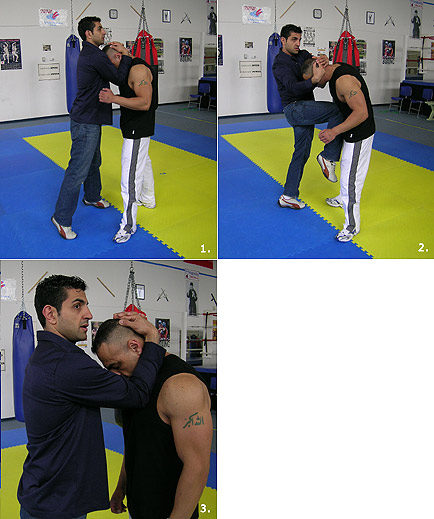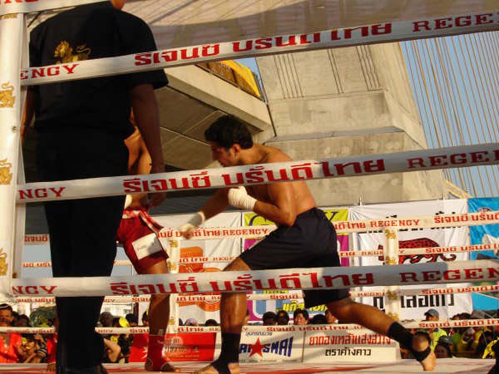
A favorite maxim of martial artists [who are trying to sound authoritative] is, "A punch is a punch and a kick is a kick." Sounds good - sounds like common sense, doesn't it? Well no, it's an absolutely stupid statement, and is completely ignorant.
When it comes to punching, boxers are second to none, and when it comes to kicking, muaythai practitioners have no peers. Sure, there are traditional martial artists who may have a strong punch or kick, but no one integrates these skills as well as boxers and muaythai fighters.
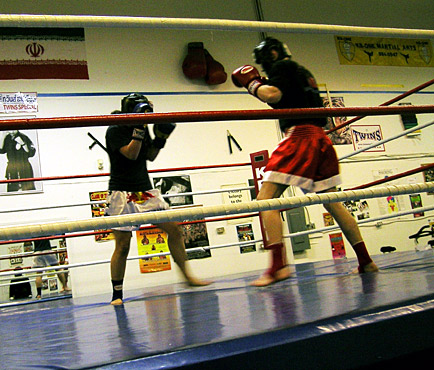
I always remind my reality-based students that if you encounter a professional sports fighter "on his terms," the fight will be over in a few seconds, in his favor -- no contest. You have no chance, professional fighters train all-day, every-day; how are you going to match these skills with your two-four hour per week training program? Traditional martial artists fare even worse with their fantasy moves.
How does this relate to reality-defense? It's significant in two major ways. #1) boxers and muaythai practitioners represent the best there is in the standup game. If you have the extra time, beyond your reality-fight practice, it may be advantageous to work out in a boxing or muaythai gym. This type of practice will develop your speed, power, coordination, rhythm, timing and distancing. Mind you, after a few months of the basics, it will be necessary to depart from the sport-only presentation.
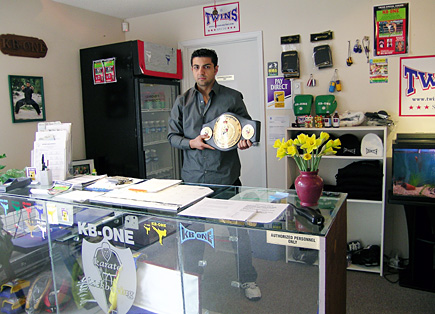
#2) more and more, youngsters are training in boxing and muaythai and it's vital to understand the basic mechanics of these sports, least you encounter them unawares. If you recall WR's newsletter about crime in France, you'll remember the teenage immigrant gangs roaming the streets of Paris at night, attacking people with their semi-professional muaythai skills; these are not your grandfather's push-and-shove incidents, many innocent (and even trained) people are getting hurt.
Furthermore, just as wrestling and Brazilian jujitsu have merged to form an unchallengeable combination on the ground; the marriage of boxing and muaythai is proving undefeatable in the standing game. Being minimumally familiar with boxing and muaythai may save your skin someday.
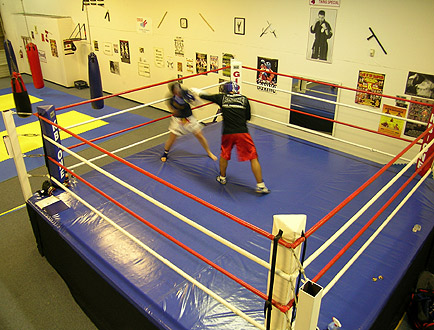
If your priorities are reality-based training, the inclusion of some boxing and muaythai into the equation is not as incongruous as you may think. Reality-defense and combatives techniques already employ techniques that are very similar. But in combatives, you really can't hit your partner for fear of injuring him. The sports side offers a venue where you can combine techniques under mild stress and without getting hurt; and you don't have to spar full-force for this training to be useful.
Some things to consider
Instead of closing your fist, keep it open to perform face smashes and chin jabs, you will still punch to the torso with a closed-fist. Many elbow moves from muaythai, are almost identical to combative moves, e.g. the smashing elbow, the back elbow and the rising elbow. Knee techniques are similar as well, e.g. the push knee and rising knee.
One extremely important thing that many combatives and reality-based systems lack is the clinch, and this is where muaythai excels. Many fighters experiencing the muaythai clinch have no response for it, and stand there becoming fodder for their attacker's knees. Learning how to deal with the clinch is an essential defensive component.
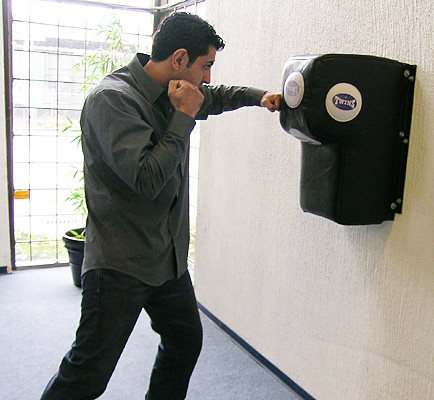
How to train
To develop your striking skills for reality-defense, the approach will be considerably different than that of pure sports training. The first order of business is to inform the trainer what you're goals are, if he says that you can achieve the same thing with traditional sports training, do a quick about-face and leave. The best method of learning your new striking skills is not in a class, but with one-on-one training. You may have to spend a few months learning the basics but after you're at a comfortable level, start integrating your striking skills in a non-traditional manner.
How to do it!
Your one-on-one training should closely approximate a street encounter, not the ring; therefore practice outside of the ring often. Practice in an open area, practice against a wall, practice on a stairway, a door entrance, in a corner. In addition don't use a bell. Many street fights last only seconds, start your sparring session in the 5-10 second range, but don't go past 20-seconds, and give it all you've got. If you've been pummeling someone for 20-seconds and he's still standing up smiling at you, it's certainly about time to save your energy to run away. Don't practice with boxing gloves; use UFC type open-palm gloves so you can grapple with your trainer. Only use light and non-bulky protective equipment, if it's too thick, you may gain a sense of false confidence.
Choosing a trainer
A good trainer does not necessarily have to be an ex-champion fighter. Take a look at every sport from tennis to basketball, from hockey to boxing, the trainers that have produced world class champions usually didn't come from the winner's circle. A trainer should however have the ability to transfer his knowledge to a student efficiently, to inspire confidence through a sound and progressive program for you.
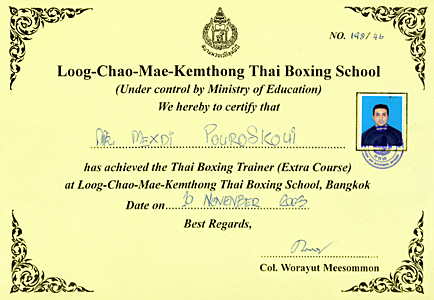
Mehdi is trainer, officially certified in Thailand.
Muaythai offers many simple but powerful techniques for the reality-based fighter, here are several examples that can be easily added to your toolbox.
Contact: www.kb-one.com
*******
Technique #1 (Below)- Defense against front kick from a distance
1. Attacker kicks from a distance (do not used this technique close-up)
2. Defender steps to the side and catches the kick with his outside hand *Note: This should only be done if you are at a distance, not close-up
3. Defender lets attacker's foot drop, and positions himself to kick
4. Defender kicks attacker's leg from behind
5. Defender steps in and strikes with an elbow to the face
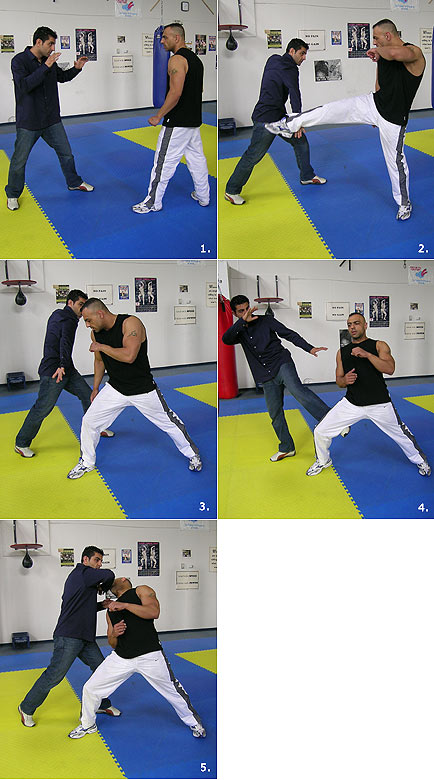
*******
Technique #2 (Below)- Defense against a wild punch
1. Defender readies himself for the attack
2. Defender steps in and blocks attacker's punch
3. Defender closes in and strikes attacker in the face with an elbow
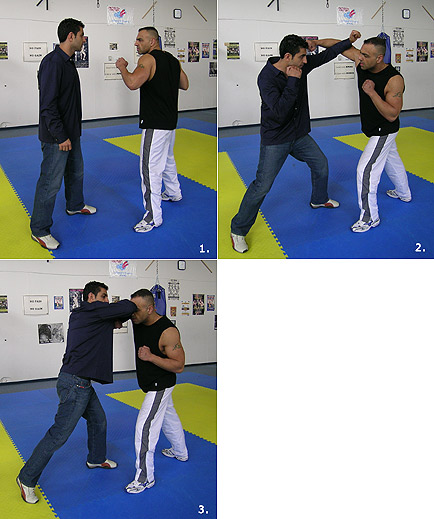
*******
Technique #3 (Below)- The wrong way to apply a head-butt
1. Defender (on right) is in the interview phase
2. Defender lifts his chin up high and back
3. Defender completes technique with his chin close to his chest
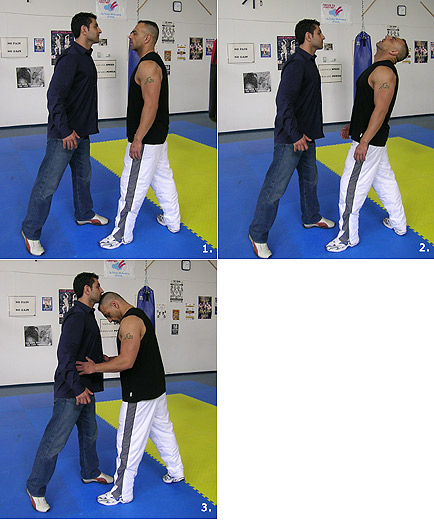
*******
Technique #4 (Below)- The correct way to apply a head-butt
1. Defender on right is in the interview phase
2. Defender sways back a a short distance
3. Defender brings his forehead straight to attacker's nose & strikes
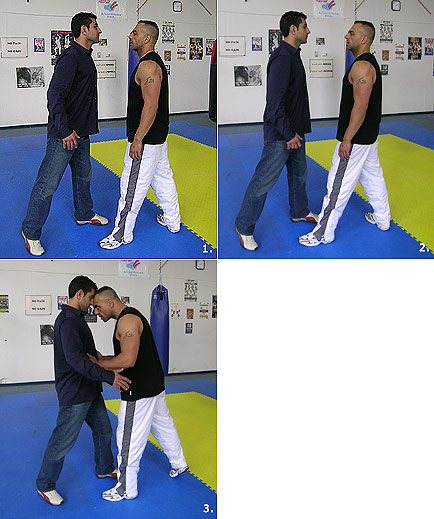
*******
Technique #5 (Below)- The wrong way to apply a Thai-clinch
1. Defender (on left) grabs behind opponent's neck
2. Deefender brings his leg back but strecthes too far to the rear
3. Defender stretched back too much and is vulnerable for knee attacks
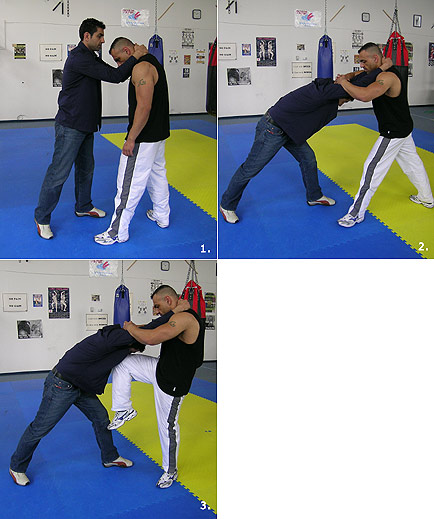
*******
Technique #6 (Below)- The correct way to preform a Thai-clinch
1. Defender (left) grabs opponent's head and pulls him in close
2. Defender pulls opponent's head in tight & close, and knees him
3. Note: defender grabs the crown (not the neck), elbows are in tight
